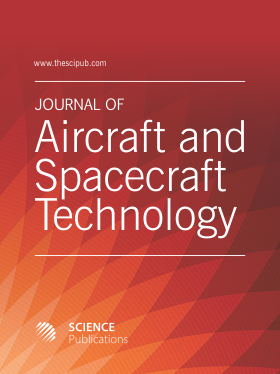Presentation of Romanian Engineers who Contributed to the Development of Global Aeronautics – Part I
- 1 Bucharest Polytechnic University, Romania
- 2 Second University of Naples, Italy
- 3 American University of Ras Al Khaimah, United Arab Emirates
Abstract
It is said that "the Romanian is born poet". And so it is, but we could say rather that "the Romanian is born and an engineer", having deeply embedded himself, the vocation of the builder, the innovator, the inventor. The great cathedrals, the beautiful monasteries built, or even the churches and churches (built or wooden) clearly show this vocation. After centuries, the "Voroneţ blue" still retains its vivid colors, even on the outer walls, beaten by rain, snow and wind. Suveica, the loom of war, the potter's wheel, the water and windmills, the musical instruments, the wells or the fountains, the agricultural tools, the traditional Romanian houses with porch, are only some proofs of the folk craftsmanship (engineering) over time. Ever since the beginnings of civilization on today's territory of Romania, the inhabitants of these lands have been pioneers in the creation and have thought of things that others have found much later. Henri Marie Coanda (June 7, 1886 - November 25, 1972) was an Academician and Romanian engineer, aviation pioneer, physicist, inventor, inventor of the reaction engine and discoverer of the effect that bears his name. The first "Coanda" attested in the village of Strehaia was in 1630, Vlădoianu Coanda. From the same source (Strehaia City Hall), we learn that Matei Coanda was the protector of Iancu Jianu, the defensive hood of the orphans. Henri Coanda was born in Bucharest on June 7, 1886, being the second child of a large family (Henri had four brothers and two sisters, a total of seven children). His father was General Constantine Coanda, a former mathematics professor at the National School of Bridges and Highways in Bucharest and former Prime Minister of Romania for a short period of time in 1918. His mother, Aida Danet, was the daughter of French physician Gustave Danet. Even from childhood, the future engineer and physicist was fascinated by the miracle of the wind, as he will later remember. Henri Coanda was first a pupil of the Petrache Poenaru School in Bucharest, then of St. Sava High School in 1896 where he attended the first three classes, after which, at 13, he was sent by his father who wanted to guide him towards his career Military High School in Iasi, 1899. He graduated high school in 1903, receiving the rank of major sergeant and continuing his studies at the School of Artillery, Genius and Marine Officers in Bucharest.
DOI: https://doi.org/10.3844/jastsp.2017.258.271

- 3,748 Views
- 2,162 Downloads
- 3 Citations
Download
Keywords
- Romanian Engineers
- Development of Global Aeronautics
- Aerospace
- Aeronautics
- Energy
